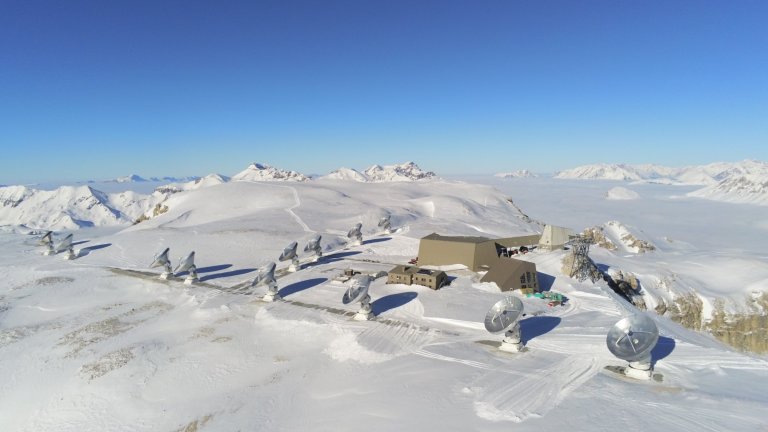
© Jérémie Boissier / IRAM / CNRS Photothèque
View the mediaScientific news
Situated in the Alps, Noema is the largest radio telescope in the Northern Hemisphere. As its twelfth and last antenna has just come into operation, it should teach us more about planet formation and allow us to look further into our universe.

© Jérémie Boissier / IRAM / CNRS Photothèque
View the mediaTwelve antennas situated at an altitude of about 2,500 metres in the Hautes-Alpes, the last of which has just come into operation, could change our understanding of the birth of planets. The Noema radio telescope, which is the largest in the Northern Hemisphere, allows us to study the star formation process and galaxy dynamics. For this purpose, the antennas pointed together towards a single source, become a giant telescope with a diameter of 1.7 km by combining their data.
Researchers from around the world are already going there to observe both stars in our solar system, and exoplanets, which are planets outside it. The main objective is to understand what happens in the last moments before their formation.
Co-funded by CNRS, Noema (Northern Extended Millimeter Array) is the result of international cooperation between France, Spain and Germany. The Minister of Research, Sylvie Retailleau, along with her German counterpart, will officially open this amazing facility on Friday 30 September on the Bure Plateau in the Dévoluy Massif.
And this is why open days have been organised for 1 and 2 October to allow you to discover Noema. However, beware: it takes several hours of hiking in the mountains to get there… But the universe is worth it!
In the meantime, and if you can’t get there, you can find out more about this fascinating instrument through a selection of our reports.
Our work is guided by the way scientists question the world around them and we translate their research into images to help people to understand the world better and to awaken their curiosity and wonderment.